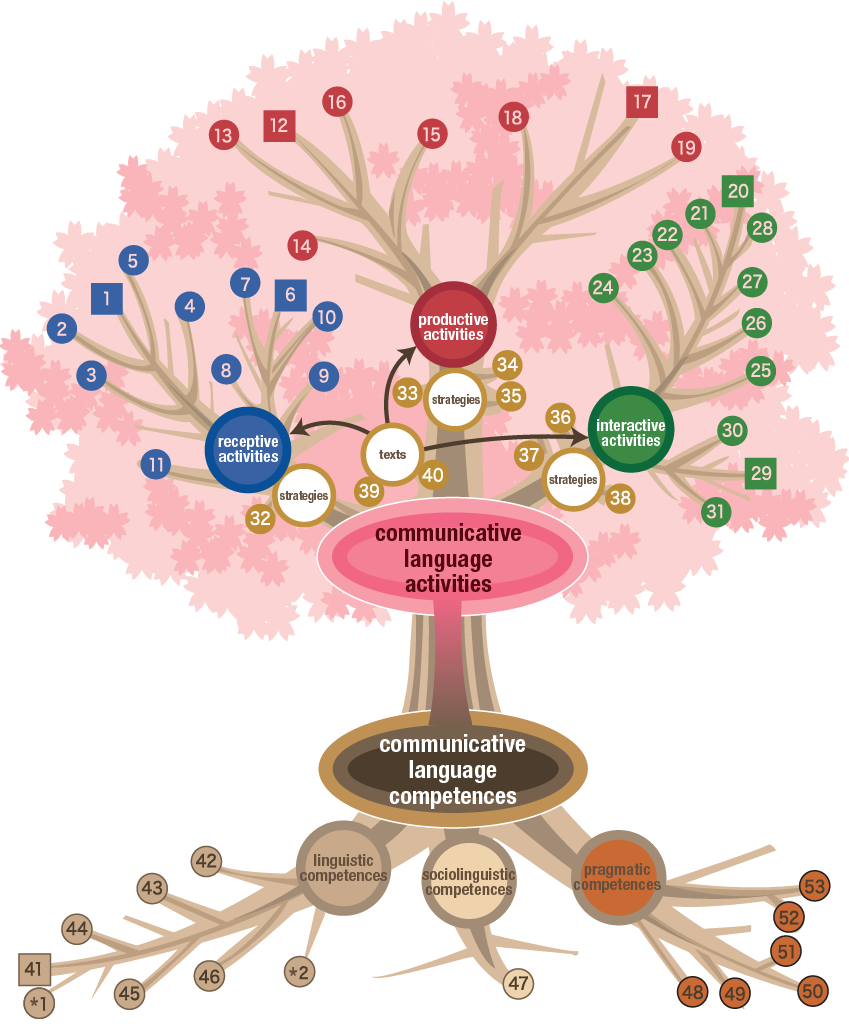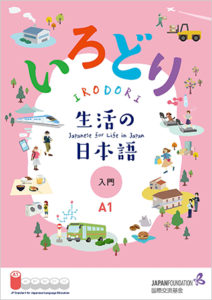In my previous post, I delved into the advantages of the task-based teaching method.

Are there any textbooks that specifically adopt the task-based method?

Two standout textbooks from the Japan Foundation, “Marugoto” and “Irodori,” exemplify the task-based method.
What Exactly is the Japan Foundation?
The publisher of these textbooks, the Japan Foundation, operates under the Japanese Ministry of Foreign Affairs as an independent administrative agency. It’s the sole institution in Japan dedicated to fostering international cultural exchanges globally, with a strong emphasis on promoting Japanese language education. It’s notably responsible for administering the JLPT (Japanese Language Proficiency Test) abroad.
The Foundation is staffed with numerous specialists in Japanese language education, leading to the creation of “Marugoto” and “Irodori” by these experts. They reflect the latest in foreign language education insights, marking them as trustworthy resources.
A glance through these textbooks will show their quality. Both feature full-color pages and include audio resources, showcasing the substantial investment made. The audio for “Irodori” even integrates background noises to more closely simulate conversational settings.
Drawing on the European CEFR standards for language competency, the Japan Foundation developed the “JF Standards.” Both “Marugoto” and “Irodori” are crafted around these standards, which are used by Preply for tutors and students to gauge language levels. This reflects a growing recognition that language proficiency goes beyond mere grammatical and vocabulary knowledge, focusing instead on practical usage.

This shift towards practical language use aligns perfectly with the task-based teaching mothod that both “Marugoto” and “Irodori” embrace. The aim is to gradually expand what learners can accomplish in Japanese.
Beyond the textbooks, there are also complementary online courses like the Marugoto Japanese Online Course and the Irodori Japanese Online Course, enabling learners to study independently.
Marugoto

“Marugoto,” meaning “the whole thing,” is a textbook released in 2011.
Pros:
- Spans levels A1 (Beginner) to B2 (Intermediate)
- Teaches not only the language but also Japanese culture
- Supported by extensive online materials, making it ideal for self-study
Cons:
- Often uses Hiragana for vocabulary that would typically be written in Kanji, potentially slowing down Kanji learning
- Geared towards classroom learning, it focuses more on listening tasks and less on interactive conversational activities with a teacher
Irodori

“Irodori,” translating to “coloring,” is a PDF textbook introduced in 2020, available for download. All materials are freely accessible. It covers levels A1 to A2, targeting learners residing in Japan.
Pros:
- Completely free
- The PDF format is user-friendly
- Covers expressions closer to real-life, including those used on social media
- Introduces informal expressions not typically found in textbooks, such as “ra-nuki” forms
- Has a more relaxed copyright policy, giving teachers freedom in classroom use
Cons:
- Only covers beginner levels (A1 to A2)
- Similar to Marugoto, it lacks interactive conversational activities with a teacher
Marugoto vs. Irodori: A Comparison
Marugoto:
- Paid resource
- Available in print
- Ranges from A1 to B2 levels
- Designed for learners interested in both the Japanese language and culture
- Targeted at learners outside Japan
- Offers additional online resources like Marugoto Plus and the Marugoto Japanese Online Course
Irodori:
- Free resource
- Available in PDF format
- Covers A1 to A2 levels
- Intended for beginners keen on basic Japanese
- Meant for individuals living in Japan or planning to
- Provides the Irodori Japanese Online Course
Who Are They For?
| Marugoto | Irodori |
| Those living outside Japan | Residents of Japan or those planning to move there. |
| Individuals interested in both the Japanese language and culture | Those wanting to quickly apply Japanese in daily life |
| Those aiming to reach up to the B2 level | Individuals preferring free resources |
| Those who prefer physical books (a digital version is also available) | Those who favor PDFs over physical books. |
Mixing and Matching “Marugoto” and “Irodori”
Both “Marugoto” and “Irodori” follow the “JF Standard,” making them great companions in your language learning. You can seamlessly transition from using “Irodori” for its free resources up to the A2 level, then level up with “Marugoto” starting from B1. It’s always smart to browse through some samples first to see which fits your learning style the best.
Busting a Myth About Task-Based Learning
There’s a bit of a myth that task-based methods skip over grammar and vocabulary instruction, but that’s far from true. “Marugoto” splits its content into “Katsudou” (activities) for putting language into action and “Rikai” (comprehension) sections for a deeper understanding of grammar and vocabulary, explained in multiple languages. “Irodori” follows suit with grammar insights of its own, ensuring you grasp the nuts and bolts of Japanese through engaging tasks.
Crafting My Own Materials
My materials are cut from the same task-based cloth as “Marugoto” and “Irodori,” yet they’re fine-tuned for the nuances of one-on-one online lesson.
Designed for group learning, these textbooks mainly focus on listening exercises. But let’s be real, that’s not the best use of your time in an online class, especially with a native speaker like myself ready to have a conversation with you.
One peeve I have with “Marugoto” is its preference for Hiragana in places where Kanji would be more appropriate, which can slow down your Kanji learning. My materials, built with Yomitan in mind, rectify this by using Kanji where it’s due and adding furigana for the trickier words to suit your level.
Given that textbooks are traditionally geared towards classroom settings, finding the perfect fit for individual online sessions can be tricky. That’s why I took it upon myself to create materials that not just meet, but exceed this need. Crafting these web materials was a hefty challenge, but the positive feedback from my students has been nothing short of inspiring. It drives me to keep improving and delivering quality materials and lessons.
Don’t miss out—give my trial lesson a shot!



